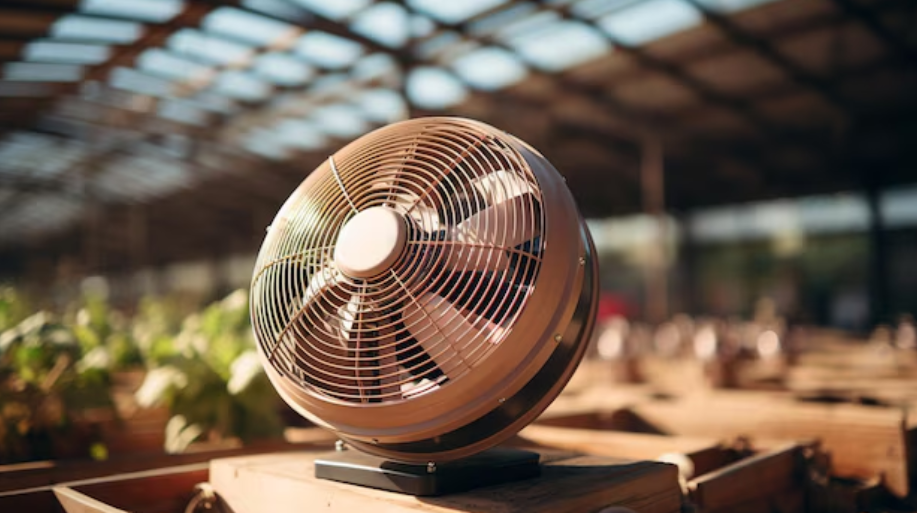Understanding the Role of Barn Exhaust Fans in Agriculture

Maintaining proper airflow is a critical factor in agricultural settings, particularly in barns where livestock health and productivity depend on a controlled environment.
Barn exhaust fans play an integral role in ensuring air quality by efficiently removing stale air, reducing excess humidity, and mitigating the accumulation of harmful gases like ammonia.
These fans are designed to promote a healthier environment, protecting both animals and workers while optimizing operational efficiency.
By focusing on the specific functions and benefits of barn exhaust fans, this discussion highlights their importance in addressing key challenges such as temperature regulation and ventilation.
As modern farming continues to prioritize sustainability and productivity, the use of efficient ventilation systems like exhaust fans becomes a cornerstone in creating optimal agricultural conditions.
What is Barn Exhaust Fans? How Does it Work?
Barn exhaust fans are specialized ventilation systems designed to improve air quality within barns and other agricultural structures.
These fans serve a critical purpose in maintaining a healthy environment by expelling stale air, controlling moisture levels, and removing harmful gases such as ammonia.
They are particularly important in barns where livestock are housed, as poor ventilation can lead to respiratory issues, heat stress, and decreased productivity in animals.
By facilitating consistent air exchange, a barn exhaust fan helps to regulate temperature, reduce humidity, and mitigate the buildup of pollutants.
This ensures the comfort and well-being of animals and workers alike while also contributing to the efficiency of agricultural operations.
How Does it Work?
The operation of barn exhaust fans is based on creating a continuous flow of air that drives out unwanted elements. Typically mounted on walls or ceilings, these fans feature a motorized propeller system.
When the fan is activated, the blades rotate to draw stale air from the interior of the barn into the fan housing. This air is then directed outside through vents or ducts.
The process creates a pressure difference that encourages the inflow of fresh air from external sources, maintaining balanced airflow throughout the barn.
This circulation prevents the accumulation of heat, excess moisture, and airborne contaminants, resulting in a cleaner and healthier indoor environment.
By understanding the role and operation of barn exhaust fans, farmers can create optimal conditions for livestock, ensuring improved animal welfare and productivity.
Benefits of Barn Exhaust Fans in Agriculture
1. Improved Air Quality: Barn exhaust fans play a vital role in maintaining the health and productivity of livestock by expelling stale air, dust, and harmful gases such as ammonia and carbon dioxide.
This promotes a cleaner and healthier environment, reducing respiratory problems in animals and workers.
2. Effective Moisture Control: Excess moisture in barns can lead to damp conditions, which encourage the growth of mold and mildew.
Barn exhaust fans regulate humidity levels by continuously removing moisture-laden air, helping to prevent structural damage and ensuring a comfortable living space for animals.
3. Reduction of Harmful Gases: In enclosed agricultural spaces, gases such as ammonia and methane can accumulate to unsafe levels, posing risks to both livestock and human health.
Barn exhaust fans continuously ventilate the space, minimizing the buildup of these hazardous gases and ensuring a safer working environment.
4. Temperature Regulation: During warm seasons, barns can become excessively hot, causing heat stress in livestock.
Barn exhaust fans help to expel hot air, keeping the interior cooler and more comfortable. This contributes to improved animal welfare and sustained productivity.
5. Better Overall Ventilation: By promoting consistent airflow, barn exhaust fans ensure that fresh air circulates throughout the barn.
This circulation helps reduce the concentration of airborne contaminants, creating an environment that supports healthier and more productive livestock.
6. Cost-Efficiency in Long-Term Operations: By preventing damage caused by moisture and reducing the risks associated with poor air quality, barn exhaust fans contribute to the longevity of barns and equipment.
Additionally, healthier animals lead to fewer medical expenses and higher productivity, making these fans a cost-effective solution for agricultural operations.
Barn exhaust fans are an essential component in achieving optimal conditions within barns, directly supporting animal welfare, operational efficiency, and overall productivity in agriculture.
Applications of Barn Exhaust Fans in Agriculture
1. Livestock Housing: Barn exhaust fans are essential in maintaining a healthy environment for livestock by ensuring proper airflow and temperature regulation.
These fans help expel stale air, ammonia, and other harmful gases, reducing the risk of respiratory diseases in animals.
By preventing heat stress, they contribute to improved feed efficiency, growth rates, and productivity in livestock such as poultry, swine, and cattle.
2. Poultry Barns: In poultry operations, barn exhaust fans play a critical role in controlling humidity and temperature, especially in facilities housing large numbers of birds.
Proper ventilation ensures the removal of excess heat, moisture, and harmful gases like ammonia, which can otherwise hinder growth and egg production.
Consistent airflow also helps maintain oxygen levels, fostering a healthier environment for poultry.
3. Dairy Barns: In dairy farming, temperature control is vital to ensure consistent milk production.
Barn exhaust fans remove warm, humid air, allowing cooler and fresher air to circulate.
This helps cows stay comfortable, minimizing the risk of heat stress, which can negatively impact their appetite and milk yield.
A cooler environment directly translates to better overall productivity in dairy operations.
4. Crop Storage Facilities: Post-harvest crops like hay, grain, and fruits require well-ventilated storage to maintain quality and prevent spoilage.
Barn exhaust fans ensure proper airflow within storage spaces, reducing moisture buildup and preventing mold and mildew growth.
This helps extend the shelf life of stored produce, minimizing financial losses due to spoilage.
5. Greenhouses in Integrated Barns: In integrated farming setups where greenhouses are part of the barn structure, exhaust fans help maintain an ideal environment for plant growth.
They regulate humidity, remove excess heat, and prevent the development of fungal diseases, promoting healthier and more robust crop yields.
This controlled environment supports consistent and reliable agricultural production.
6. Odor and Dust Control: In barns where livestock or feed is stored, odor and dust can accumulate quickly, posing risks to both animals and workers.
Barn exhaust fans work to reduce airborne contaminants, creating a cleaner and more pleasant space for all occupants.
Barn exhaust fans are indispensable in agricultural operations, addressing the challenges of ventilation, temperature, and air quality to support healthier livestock, higher crop yields, and improved productivity.
Final Thoughts
Barn exhaust fans are indispensable tools in modern agriculture, providing essential solutions for maintaining air quality, regulating temperature, and ensuring the comfort and productivity of livestock.
Their ability to remove harmful gases, control humidity, and promote consistent airflow directly contributes to healthier environments for both animals and workers.
As farming practices adapt to meet the challenges of climate conditions and increasing demands, the importance of efficient ventilation systems like barn exhaust fans becomes even more evident.
Investing in the right ventilation system is a practical step toward improving operational efficiency, safeguarding livestock welfare, and sustaining agricultural productivity.
By understanding their role and applications, farmers can make informed decisions that support long-term success and create an optimal environment for their agricultural operations.




